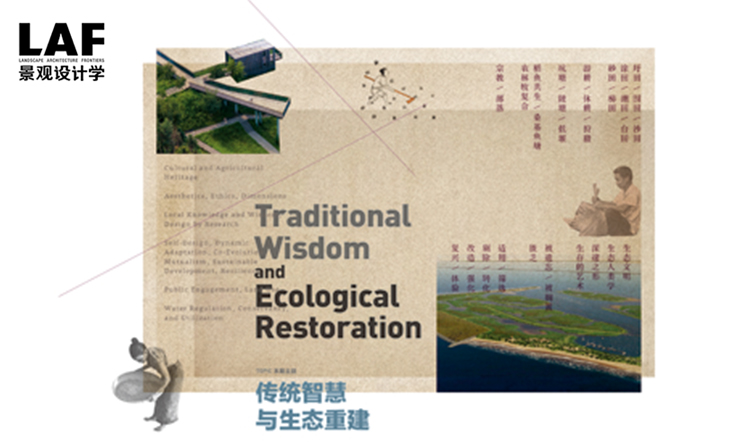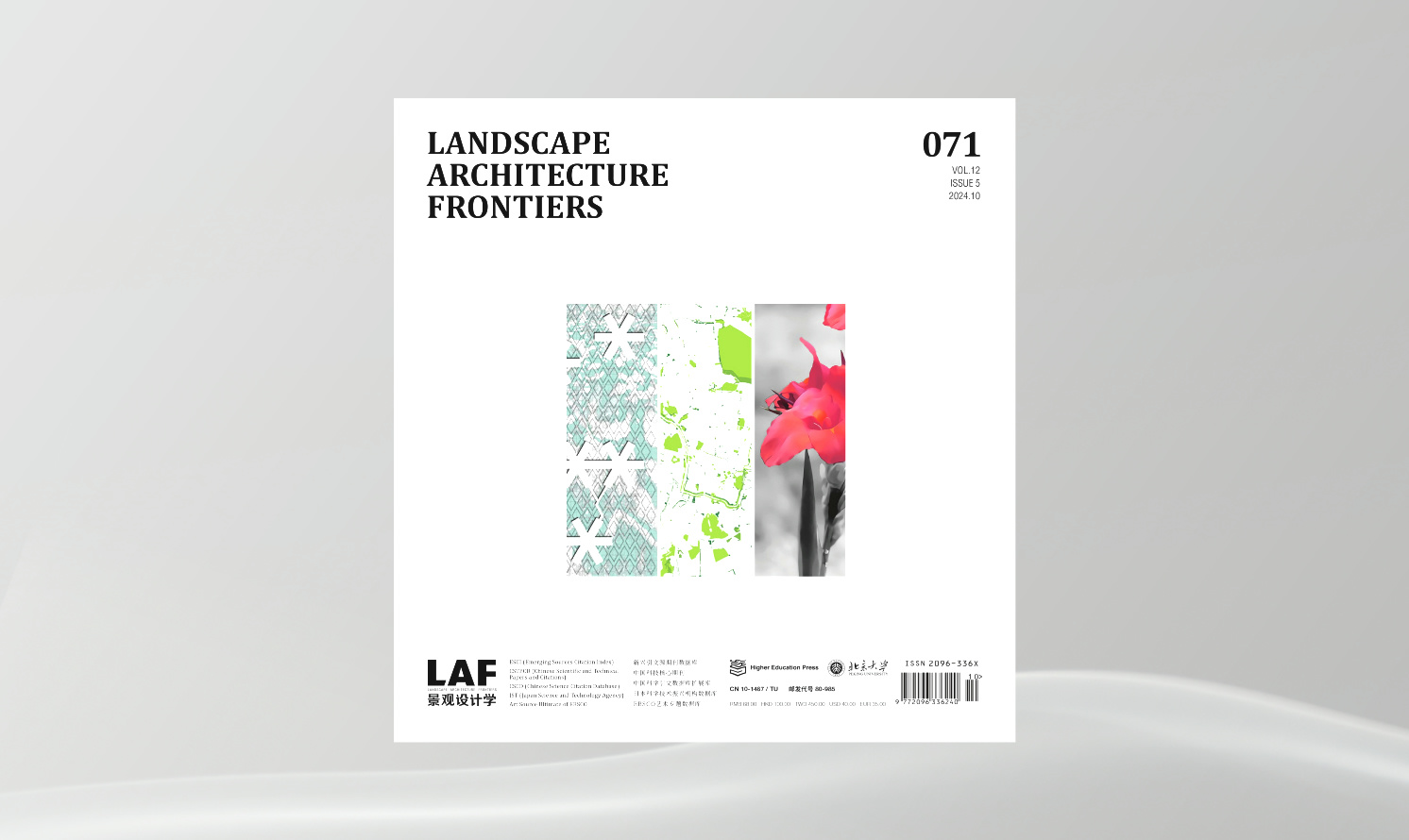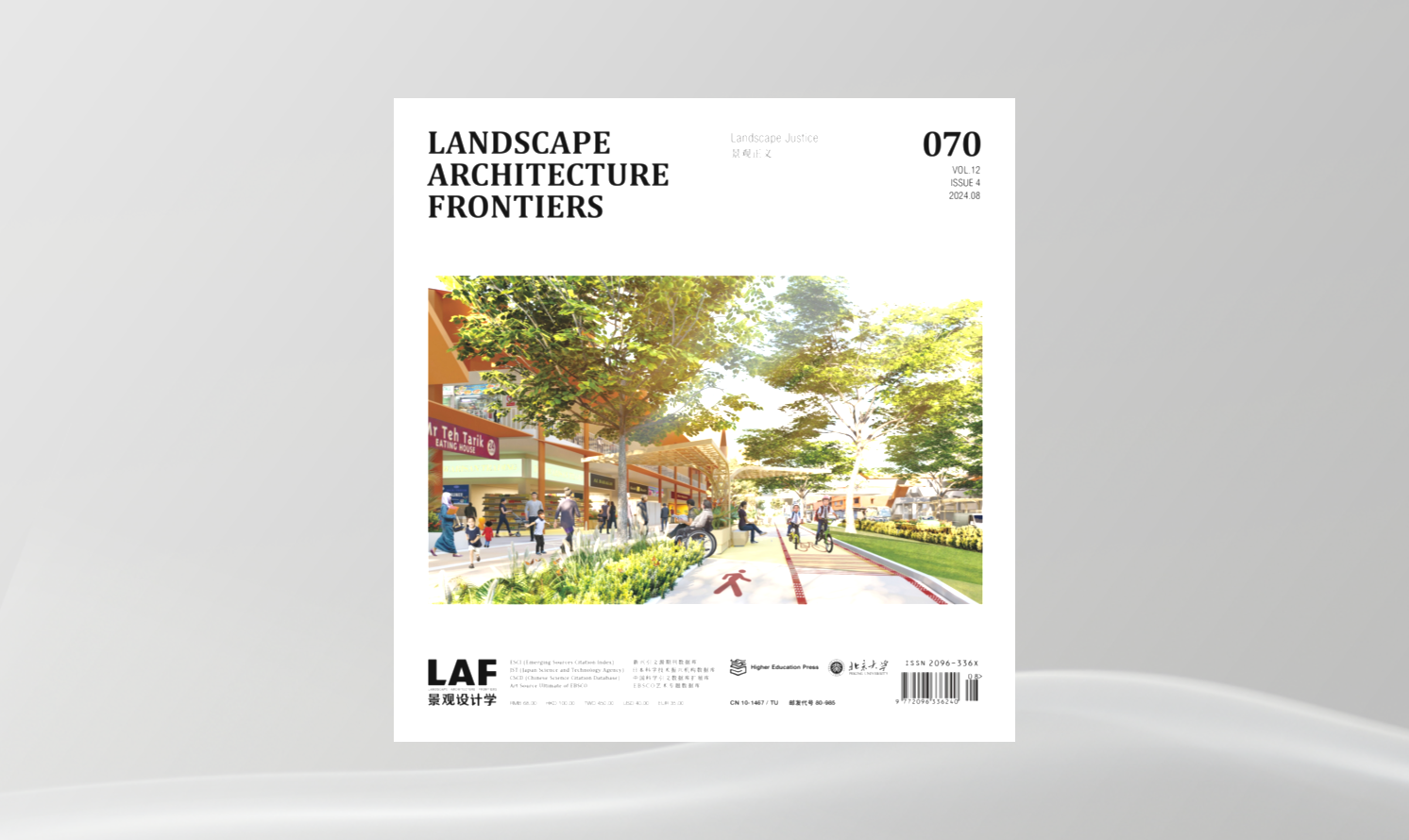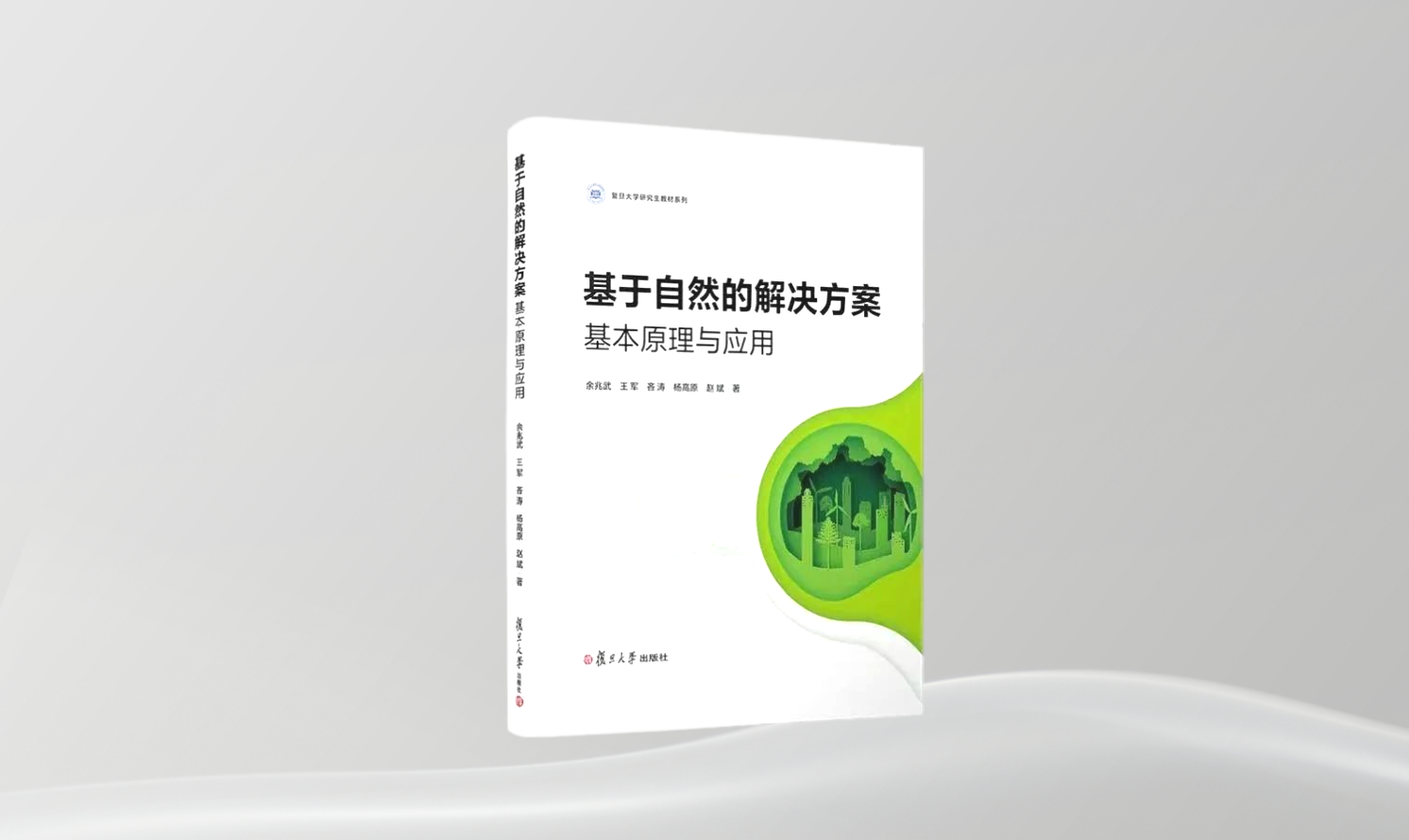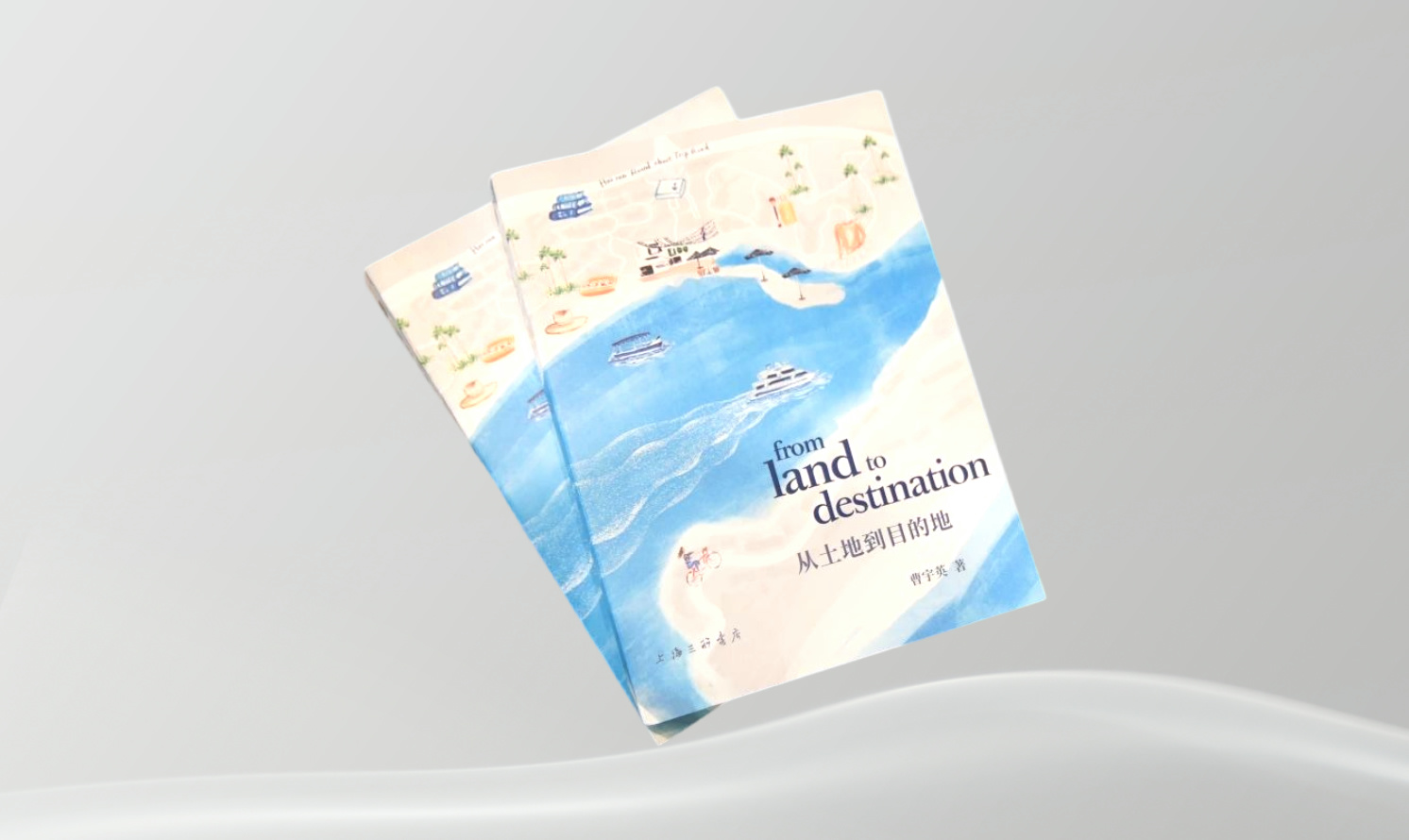北大景觀對(duì)于中國(guó)傳統(tǒng)生態(tài)智慧及其復(fù)興的研究
LA PKU’s Research on China’s Traditional Eco-Wisdom and Related Application in Contemporary Landscape Planning and Design
作者:張蕾 Lei ZHANG
摘要
自1997年起,北大景觀研究團(tuán)隊(duì)對(duì)中國(guó)傳統(tǒng)生態(tài)智慧及其復(fù)興開(kāi)展了一系列研究�����。本文首先梳理了這些研究的背景和發(fā)展歷程:早期的研究主要關(guān)注“風(fēng)水”和鄉(xiāng)土景觀����,源于在規(guī)劃設(shè)計(jì)實(shí)踐中理解和回應(yīng)地方自然與人文過(guò)程;2006年����,俞孔堅(jiān)提出景觀設(shè)計(jì)學(xué)是一門(mén)“生存的藝術(shù)”的學(xué)科定位,推進(jìn)了對(duì)傳統(tǒng)“生存的藝術(shù)”的研究及其復(fù)興���,旨在為當(dāng)代景觀設(shè)計(jì)學(xué)尋找歷史根基�����,并將研究成果用于解決當(dāng)代生態(tài)環(huán)境問(wèn)題�����;2014年�,“生存的藝術(shù)”的研究被進(jìn)一步推進(jìn)到對(duì)中國(guó)傳統(tǒng)景觀“深邃之形”的探索,即從形式語(yǔ)言與微觀和場(chǎng)地尺度的設(shè)計(jì)策略等角度深入研究傳統(tǒng)景觀���,從中提煉出可用于當(dāng)代景觀設(shè)計(jì)的語(yǔ)言�。在此基礎(chǔ)上����,本文回顧總結(jié)了北大景觀在過(guò)去20年間取得的主要研究成果,包括傳統(tǒng)農(nóng)業(yè)景觀�、鄉(xiāng)土聚落、傳統(tǒng)水適應(yīng)性景觀三個(gè)方面����。
關(guān)鍵詞
北大景觀;生態(tài)智慧��;景觀規(guī)劃設(shè)計(jì)���;鄉(xiāng)土景觀�;生存的藝術(shù)����;水適應(yīng)性景觀
Abstract
Since 1997, LA PKU has conducted a series of studies on China’s traditional ecological wisdom and related application in contemporary landscape planning and design. This paper first reviews the background and the course of LA PKU’s research: In early years, they studied on Feng-shui and vernacular landscapes that stemmed from their understanding and response to local natural and human processes in planning and design practice; In 2006, Kongjian Yu proposed the concept that Landscape Architecture is a discipline concentrating on the art of survival, which has greatly promoted the study and revival of traditional eco-wisdom, not only providing a historical base for the modern development of Landscape Architecture, but also applying the research results in responding to contemporary environmental and ecological problems; In 2014, developed upon the achievement on the art of survival, LA PKU further explored the deep form of China’s traditional landscapes by studying local spatial forms and design strategies on micro- and site-scales and translating such ecological solutions into China’s contemporary landscape design. The paper also reviews on LA PKU’s important research results over the past two decades, including traditional agricultural landscapes, vernacular settlements, and traditional water-adaptive landscapes.
Key words
LA PKU; Ecological Wisdom; Landscape Planning and Design; Vernacular Landscape; Art of Survival; Water-Adaptive Landscape
重拾傳統(tǒng)智慧
Adapting Traditional Wisdom for Present-day Use
作者:楊庭碩 Tingshuo YANG
摘要
受訪人楊庭碩為人類(lèi)學(xué)和民族學(xué)專(zhuān)家,其從人類(lèi)社會(huì)發(fā)展的視角出發(fā)�����,對(duì)傳統(tǒng)進(jìn)行了定義和解讀���,同時(shí)指出傳統(tǒng)包括三個(gè)層次�����,即與無(wú)機(jī)自然相關(guān)的傳統(tǒng)�����、與有機(jī)生態(tài)系統(tǒng)相關(guān)的傳統(tǒng)��,以及與社會(huì)人文相關(guān)的傳統(tǒng)�����,并強(qiáng)調(diào)這三個(gè)層次各有各的發(fā)展規(guī)律與延續(xù)周期�,但又會(huì)相互影響。而后�,受訪人對(duì)傳統(tǒng)知識(shí)和傳統(tǒng)智慧進(jìn)行了辨析,認(rèn)為傳統(tǒng)智慧維度復(fù)雜��、內(nèi)容豐富��,我們需要以辯證發(fā)展觀來(lái)審視傳統(tǒng)智慧的意義�����,并說(shuō)明了在科學(xué)持續(xù)發(fā)展���、技術(shù)不斷推陳出新的今天強(qiáng)調(diào)傳統(tǒng)智慧的意義����。最后����,受訪人指出,傳統(tǒng)智慧對(duì)當(dāng)今的環(huán)境建設(shè)具有積極貢獻(xiàn)���,這些智慧不僅需要積累和傳承�����,更需要弘揚(yáng)和創(chuàng)新���,以在生態(tài)文明建設(shè)中獲得新的適用可能,這一點(diǎn)尤為緊迫和必要��。
關(guān)鍵詞
傳統(tǒng)智慧�����;知識(shí)�;人類(lèi)社會(huì)發(fā)展;生態(tài)文明建設(shè)
Abstract
Tingshuo Yang, the interviewee, is an anthropologist and ethnologist. He defines traditions from a perspective of human society development and points out that there are three spheres of traditions, including the ones respectively related to inorganic nature, organic ecosystems, and social customs. Traditions in such three spheres are under independent development laws and cycles, while influencing each other. The interviewee also distinguishes traditional knowledge from traditional wisdom and emphasizes that traditional wisdom is complex in dimensions and rich in contents which requires us to examine and define traditional wisdom with a dialectical, developing outlook. He further underlines the significance of applying the wisdoms in traditions though under nowadays unceasing scientific and technological advance. Finally, Yang argues that how to reactivate and apply such wisdoms for present-day use is one of the pressing and necessary tasks that we are facing today.
Key words
Traditional Wisdom; Knowledge; Human Social Development; Ecological Civilization Construction
關(guān)注生態(tài)人類(lèi)學(xué)�����,重視文化適應(yīng)研究
Learning from Ecological Anthropology and Acculturation Studies
作者:尹紹亭 Shaoting YIN
摘要
從人種學(xué)����、地理學(xué)、民族學(xué)����、人類(lèi)學(xué)��,到文化生態(tài)學(xué)�,再到生態(tài)人類(lèi)學(xué)�����,這些關(guān)注人與自然關(guān)系的學(xué)科隨時(shí)代更迭而逐漸發(fā)展和演變�。以“生態(tài)系統(tǒng)”理論為分析研究工具、“文化適應(yīng)”概念為核心的生態(tài)人類(lèi)學(xué)長(zhǎng)期以來(lái)聚焦于封閉地域的地方性知識(shí)��,并整理出了一系列文化適應(yīng)的傳統(tǒng)知識(shí)和智慧�。在高速發(fā)展的時(shí)代背景下,無(wú)論是作為生態(tài)人類(lèi)學(xué)研究成果的地方性知識(shí)��,還是該學(xué)科自身的研究方法都面臨著挑戰(zhàn)�。在訪談中,受訪人尹紹亭為我們厘清了生態(tài)人類(lèi)學(xué)的起源與內(nèi)涵��,并強(qiáng)調(diào)在新時(shí)代背景下��,我們應(yīng)深入發(fā)掘各民族傳統(tǒng)適應(yīng)方式的精華��,努力傳承地方性知識(shí)和智慧����,同時(shí)��,其也對(duì)生態(tài)人類(lèi)學(xué)的發(fā)展方向給予了建議�。
關(guān)鍵詞
生態(tài)人類(lèi)學(xué)�����;文化適應(yīng)��;地方性知識(shí)����;環(huán)境�����;傳統(tǒng)
Abstract
Disciplines from Ethnography, Geography, Ethnology, and Anthropology to Cultural Ecology and Ecological Anthropology have studied the development of human-nature relationships. Ecological Anthropology, which takes ecosystem theories as the analysis tools and acculturation as the core concept, has concentrated on the local knowledge of enclosed territories and the traditional knowledge and wisdom of acculturation. In an era of rapid-development, the local knowledge brought to light by Ecological Anthropology, and the discipline itself, are faced with challenges. The interviewee, Shaoting Yin, clarified the origins and scope of Ecological Anthropology and emphasized the efforts that should be made to understand how accrued local knowledge can be passed down. He also suggested how Ecological Anthropology can continue to develop and change.
Key words
Ecological Anthropology; Acculturation; Local Knowledge; Environment; Tradition
部落文明視角下的建造實(shí)踐
Construction Practices from the Perspective of Tribal Civilization
作者:謝英俊 Ying-Chun HSIEN
摘要
本次訪談圍繞鄉(xiāng)村建房實(shí)踐及對(duì)部落文明的討論展開(kāi)�。受訪人謝英俊以河南省蘭考縣合作建房項(xiàng)目及四川省茂縣楊柳村震后重建項(xiàng)目為例,闡釋了可持續(xù)性這一建造核心原則和居民參與的重要性��。他認(rèn)為在部落文明的視角下����,從“匱乏”的維度出發(fā),遵循設(shè)計(jì)師主體弱化的原則�����,采用開(kāi)放系統(tǒng)、簡(jiǎn)單技術(shù)���,以及數(shù)碼化的方法���,可以促進(jìn)公眾參與,并更好地利用傳統(tǒng)智慧進(jìn)行建筑營(yíng)造和社會(huì)構(gòu)建�。
關(guān)鍵詞
匱乏;可持續(xù)性��;傳統(tǒng)�����;部落文明����;數(shù)碼化;公眾參與
Abstract
This interview discusses the practice of house building in rural areas and opinions of tribal civilization. Through cooperative building projects in Lankao County, He’nan Province and post-earthquake reconstruction in Yangliu Village of Mao County, Sichuan Province, Ying-Chun Hsieh, the interviewee, explained the importance of sustainability, which is the core principle of construction, and the public participation in community rebuilding. He believed that, from the perspective of tribal civilization and the dimension of scarcity, by reducing the importance of the “expert” designer, and adopting open system, simple techniques, and digitalized approaches, public participation could be promoted and a better integration of traditional wisdom in building and society construction could be achieved.
Key words
Scarcity; Sustainability; Tradition; Tribal Civilization; Digitalization; Public Participation
生態(tài)實(shí)踐中的傳承與創(chuàng)新——中國(guó)城市科學(xué)研究會(huì)景觀學(xué)與美麗中國(guó)建設(shè)專(zhuān)業(yè)委員會(huì)座談會(huì)紀(jì)實(shí)
Inheritance and Innovation in Ecological Practice — Report on the Forum of the Committee of Landscape Architecture, Chinese Society for Urban Studies
作者:《景觀設(shè)計(jì)學(xué)》編輯部 Landscape Architecture Frontiers
摘要
2018年1月21日�����,中國(guó)城市科學(xué)研究會(huì)景觀學(xué)與美麗中國(guó)建設(shè)專(zhuān)業(yè)委員會(huì)座談會(huì)于北京大學(xué)建筑與景觀設(shè)計(jì)學(xué)院舉辦�����。來(lái)自景觀、生態(tài)�����、水利�、規(guī)劃等領(lǐng)域的30余位學(xué)者、設(shè)計(jì)師����、教育者及其他從業(yè)人士參加了會(huì)議��,并圍繞美麗中國(guó)建設(shè)����、生態(tài)文明建設(shè)、景觀設(shè)計(jì)學(xué)科建設(shè)����、行業(yè)融合等議題展開(kāi)討論。座談會(huì)最終達(dá)成共識(shí)��,提出了跨界生態(tài)實(shí)踐的迫切性和必要性���,同時(shí)探討了在教育和實(shí)踐層面跨界的難點(diǎn)與問(wèn)題——不同行業(yè)的優(yōu)勢(shì)���、職責(zé)以及在“跨界”中的作用尚不明確��,學(xué)科教育也未能很好地構(gòu)建并明晰自身的核心競(jìng)爭(zhēng)力——呼吁應(yīng)積極促進(jìn)學(xué)科與行業(yè)融合����,使其適應(yīng)當(dāng)代需求��。
關(guān)鍵詞
景觀設(shè)計(jì)學(xué)�;美麗中國(guó);生態(tài)文明建設(shè)��;跨學(xué)科協(xié)作���;行業(yè)融合
Abstract
On January 21, 2018, the Forum of the Committee of Landscape Architecture, Chinese Society for Urban Studies was held at the College of Architecture and Landscape in Peking University. More than 30 participants from the fields of landscape, ecology, water management, and planning exchanged ideas on the current Beautiful China and Ecological Civilization Construction movements, as well as the development of Landscape Architecture and interdisciplinary and multi-professional collaborations. A consensus on the urgency and necessity of collaborative ecological practices, while an acknowledgement on the difficulties of such work, was reached. Specifically, problems of competitiveness and responsibility remain in the interdisciplinary practice; and the discipline of landscape architecture currently fails to identify its strengths. Thus, landscape architecture needs to actively promote disciplinary and industrial integration to meet contemporary needs.
Key words
Landscape Architecture; Beautiful China; Ecological Civilization Construction; Interdisciplinary Collaboration; Cross-industry Collaboration
荷蘭馬肯湖-瓦登海項(xiàng)目:探索自然的建造
Marker Wadden, The Netherlands: A Building-with-Nature Exploration
作者:熊亮���,瑞克·德·菲索 Liang XIONG,Rik de VISSER
摘要
荷蘭馬肯湖-瓦登海項(xiàng)目實(shí)現(xiàn)了傳統(tǒng)智慧與前沿技術(shù)之間的平衡���。一方面���,基于圩田模式這一荷蘭傳統(tǒng)的共識(shí)式?jīng)Q策模式�,多個(gè)公共和私營(yíng)部門(mén)聯(lián)合制定出了馬肯湖-瓦登海項(xiàng)目計(jì)劃��;另一方面����,該項(xiàng)目在設(shè)計(jì)思想及技術(shù)方面進(jìn)行了大膽探索,并利用創(chuàng)新技術(shù)和自然進(jìn)程建造出了新的自然���。馬肯湖-瓦登海項(xiàng)目在這個(gè)氣候急劇變化的時(shí)代具有重要意義�,其濕地設(shè)計(jì)與建造將有助于可持續(xù)水資源管理����,改善當(dāng)?shù)厣鷳B(tài)系統(tǒng)����,并增強(qiáng)處于暴雨和洪水威脅中的河流三角洲地區(qū)的韌性。
關(guān)鍵詞
馬肯湖�����;圩田模式���;淤泥����;群島;自然建造���;棲息地修復(fù)���;研究式設(shè)計(jì)
Abstract
The Marker Wadden finds a good balance between traditional wisdom and technology advance. On the one hand, based on the polder model, a traditional consensus way of planning and decision-making in the Netherlands, the Marker Wadden project is created by an alliance of both public and private bodies sitting together and their opinions acknowledged. On the other hand, it boldly explores in both philosophy and technique, and a new nature has been achieved by using innovative techniques and natural processes. Marker Wadden will be of great importance in a time of climate change. Wetland design and construction can contribute to sustainable water management, improve local ecosystems, and provide greater resilience of river deltas in storms and floods.
Key words
The Markermeer; Polder Model; Silt; Archipelago; Building with Nature; Habitat Restoration; Design by Research
應(yīng)對(duì)環(huán)境變化的多功能濕地設(shè)計(jì)——三峽庫(kù)區(qū)漢豐湖芙蓉壩灣濕地生態(tài)系統(tǒng)建設(shè)
Multi-Functional Wetland Design Adaptive to Environmental Changes — Wetland Ecosystem Construction of Furongba Bay in Hanfeng Lake of the Three Gorges Reservoir Area
作者:袁嘉,袁興中�����,王曉峰����,熊森,劉楊靖 Jia YUAN��,Xiongzhong YUAN��,Xiaofeng WANG�����,Sen XIONG,Yangjing LIU
摘要
漢豐湖是一處因三峽水庫(kù)蓄水造成的季節(jié)性水位消漲而形成的城市內(nèi)湖�,面臨著水環(huán)境污染、水生生物物種消失或?yàn)l危�����、土地利用格局改變等問(wèn)題��。本文以漢豐湖芙蓉壩湖灣濕地生態(tài)系統(tǒng)建設(shè)為例���,探討如何借鑒中國(guó)傳統(tǒng)農(nóng)耕時(shí)代與治水����、利水�����、善水相關(guān)的生態(tài)智慧����,運(yùn)用動(dòng)態(tài)景觀設(shè)計(jì)�、多功能景觀設(shè)計(jì)、環(huán)湖圈層設(shè)計(jì)和協(xié)同進(jìn)化及互利共生等理念����,打造能夠適應(yīng)環(huán)境變化的多功能消落帶濕地����。
關(guān)鍵詞
多功能濕地�;生態(tài)系統(tǒng);傳統(tǒng)生態(tài)智慧�����;漢豐湖�����;消落帶���;三峽庫(kù)區(qū)
Abstract
Hanfeng Lake, an inland lake formed by the seasonal water fluctuations due to the water storage and sluice in the Three Gorges Reservoir, was faced with ecological challenges such as water pollution, aquatic biodiversity loss, and changes in land use pattern. This article takes the wetland ecosystem construction in Furongba Bay, Hanfeng Lake as an example to explore approaches to designing multi-functional wetlands which could adapt to hydro-fluctuation and other environmental changes, by drawing from the ecological wisdoms of water regulation, conservancy, and utilization developed in the agrarian age of China to support a dynamic, multi-layered landscape of mutualism and co-evolution.
Key words
Multi-Functional Wetland; Ecosystem; Traditional Ecological Wisdom; Hanfeng Lake; Hydro-Fluctuation Zone; The Three Gorges Reservoir Area
從棚戶(hù)區(qū)的灰色地帶到新城區(qū)的韌性濕地——海南三亞?wèn)|岸濕地公園
From an Ignored Grey Place to a Resilient Urban Wetland — Dong’an Wetland Park in Sanya, Hainan Province
作者:拜真���,俞文宇,張喻�����,董恬祎��,林國(guó)雄 Zhen BAI, Wenyu YU, Yu ZHANG, Tianyi DONG, Guoxiong LIN
摘要
由于東岸濕地在三亞海綿城市系統(tǒng)中占據(jù)著至關(guān)重要的生態(tài)區(qū)位,東岸濕地公園項(xiàng)目被列為第一批“雙城”“雙修”重點(diǎn)項(xiàng)目�。作為城市雨洪管理中的重要節(jié)點(diǎn),東岸濕地公園的設(shè)計(jì)期望在促進(jìn)水循環(huán)����、凈化水質(zhì)、調(diào)蓄雨洪旱澇的同時(shí)��,融合休閑游憩綜合功能����。設(shè)計(jì)運(yùn)用陂塘濕地、水上森林�、臺(tái)田菜園、環(huán)形游步道等韌性景觀元素���,實(shí)現(xiàn)了修復(fù)場(chǎng)地生態(tài)�����、構(gòu)建海綿設(shè)施的目標(biāo)����,并成為了白鷺新的棲息家園�、孩子們的自然學(xué)校,以及市民回歸鄉(xiāng)愁體驗(yàn)的新樂(lè)園��。
關(guān)鍵詞
雙城雙修����;韌性海綿;棲息地����;生物多樣性;鄉(xiāng)愁
Abstract
The Dong’an Wetland was designated as the site for one of Sanya’s first pilot projects of urban environmental remediation and ecological restoration because of its key position in the regional ecological pattern, especially for urban stormwater management. The project aims at integrating leisure and recreational functions with landscape elements including ponds, forest on water, terraced vegetable garden, and trail loop, while promoting water circulation, improving water quality, and retaining rainwater and regulating water reuse, acting as a resilient urban sponge for rainwater management. The newly built project transforms an ignored grey place into a new home for egrets, an outdoor classroom for children’s nature education, and a destination for citizens to evoke their memories.
Key words
Sponge City Construction and Underground Corridor-System Construction; Urban Environmental Remediation and Ecological Restoration; Resilient Sponge; Habitat; Biodiversity; Nostalgia
江蘇省南通市石港鎮(zhèn)鄉(xiāng)村河道生產(chǎn)性景觀設(shè)計(jì)
Productive Landscape Design for the Rural River Channels in Shigang Town of Nantong, Jiangsu Province
作者:金晶����,江麗,黃奕涵��,華莎 Jing JIN, Li JIANG, Yihan HUANG, Sha HUA
摘要
鄉(xiāng)村河道是江南水鄉(xiāng)所依賴(lài)的生存空間要素和生產(chǎn)經(jīng)營(yíng)場(chǎng)所�,體現(xiàn)著水鄉(xiāng)獨(dú)特的文化屬性。但隨著經(jīng)濟(jì)社會(huì)的發(fā)展����,鄉(xiāng)村景觀同質(zhì)化、生態(tài)環(huán)境破壞等問(wèn)題愈發(fā)嚴(yán)峻�����。本項(xiàng)目以江蘇省南通市石港鎮(zhèn)漁灣河道為研究對(duì)象,在對(duì)鄉(xiāng)村河道進(jìn)行生態(tài)保護(hù)的基礎(chǔ)上��,借鑒傳統(tǒng)臨水生產(chǎn)模式�����,提出了鄉(xiāng)村體驗(yàn)式生產(chǎn)性景觀的設(shè)計(jì)策略�,以推動(dòng)生產(chǎn)、生活和生態(tài)三者融合共生�����。
關(guān)鍵詞
鄉(xiāng)村河道����;生態(tài)修復(fù);臨水生產(chǎn)模式����;院落記憶;體驗(yàn)式生產(chǎn)性景觀
Abstract
In the rural south of the lower reaches of the Yangtze River, river channels, which provide locals with space for living and production, are currently faced with problems such as featureless landscape and environmental degradation due to rapid social and economic development. Inspired by the traditional riverfront production pattern, this project aims at ecological restoration and environment protection by creating experiencing productive landscape in the Fishery Bay of Shigang Town, Nantong, Jiangsu Province, and integrating production, living, and ecology on the site as a whole.
Key words
Rural River Channel; Ecological Restoration; Riverfront Production Pattern; Nostalgia; Experiencing Productive Landscape
萌發(fā)的混合景觀與新鄉(xiāng)土景觀
Emerging Hybridity and the New Vernacular Landscape
作者:丹尼·卡爾森 Dane Carlson
摘要
以具有實(shí)際效用的環(huán)境適應(yīng)性為特征的鄉(xiāng)土景觀�����,必須實(shí)現(xiàn)從學(xué)術(shù)議題到設(shè)計(jì)實(shí)踐的角色轉(zhuǎn)變����。鄉(xiāng)土性是動(dòng)態(tài)的,它在延續(xù)與轉(zhuǎn)變的矛盾中不斷被重新定義�。鄉(xiāng)土性為持續(xù)追求韌性和適應(yīng)性的景觀設(shè)計(jì)學(xué)科提供了必要的基礎(chǔ)。木斯塘地區(qū)在歷史上長(zhǎng)期處于尼泊爾的邊緣地帶�����,這里的景觀正在經(jīng)歷經(jīng)濟(jì)���、基礎(chǔ)設(shè)施�,以及人口結(jié)構(gòu)巨變所帶來(lái)的沖擊���。為了應(yīng)對(duì)不斷出現(xiàn)的延續(xù)與斷層問(wèn)題��,這里的景觀正在被重塑為一種混合景觀����,即一種新鄉(xiāng)土景觀���。在延續(xù)與轉(zhuǎn)變的碰撞中����,新的資源與機(jī)會(huì)不斷產(chǎn)生,由此衍生的混合實(shí)踐必將繼續(xù)演進(jìn)���。
關(guān)鍵詞
鄉(xiāng)土景觀��;混合景觀��;尼泊爾�;延續(xù)與轉(zhuǎn)變����;能動(dòng)性;適應(yīng)性響應(yīng)
Abstract
The vernacular landscape, defined by pragmatic adaptation, must shift from subject of scholarship to realm of design operations. The vernacular is dynamic, constantly redefined at the intersections of continuity and change. It provides the necessary foundations for a discipline expanding in pursuit of resiliency and adaptive response. The landscape of Nepal’s Mustang district, peripheral to the Nepali state for most of its history, is being shaken by seismic economic, infrastructural, and demographic shifts. In response to emerging continuities and discontinuities, its landscape is being remade as a hybrid landscape, a new vernacular. This practice of hybridization must continue to evolve where new resources and opportunities emerge at the intersections of continuity and change.
Key words
Vernacular Landscape; Hybridity; Nepal; Continuity and Change; Agency; Adaptive Response
游耕農(nóng)民的地方性知識(shí)和可持續(xù)土地利用的挑戰(zhàn):老撾北部流域管理項(xiàng)目的經(jīng)驗(yàn)與教訓(xùn)
Local Knowledge of Swidden Farmers and Challenges for Sustainable Land Use: Lessons from a Watershed Management Project in Northern Laos
作者:里見(jiàn)·東 Satomi HIGASHI
摘要
老撾地處東南亞大陸��,在其境內(nèi)的許多地區(qū)���,游耕已成為關(guān)乎當(dāng)?shù)厣鐓^(qū)糧食安全以及宗教���、文化寄托的重要生計(jì)之一—對(duì)于老撾的高地地區(qū)尤為如此。
由于多項(xiàng)土地和森林管理政策�����,以及村莊遷移和合并計(jì)劃的推行,老撾北部烏多姆賽省北賓區(qū)的社區(qū)居民進(jìn)入森林的權(quán)利受到限制��,因而不得不面對(duì)耕地資源短缺的問(wèn)題�����。在沒(méi)有足夠耕地的情況下���,當(dāng)?shù)剞r(nóng)民開(kāi)始以一種破壞性的方式使用森林資源。
作為非政府環(huán)境組織的項(xiàng)目負(fù)責(zé)人�,作者參與了一項(xiàng)基于社區(qū)的流域管理項(xiàng)目,并克服重重挑戰(zhàn)�����,找到了適于當(dāng)?shù)厣鐓^(qū)土地利用的土地和森林管理體系��。該非政府組織嘗試采用一種替代方案�����,以使游耕農(nóng)民的土地利用方式與官方土地和森林管理體系并存互利��。
關(guān)鍵詞
游耕�����;高地農(nóng)民;土地和森林管理政策���;老撾�����;非政府組織
Abstract
In Laos, located in mainland Southeast Asia, shifting cultivation has been one of the important means of livelihood, in terms of food security as well as religious and cultural anchorage, for local communities in a number of areas, especially in upland areas in the country.
In Pakbeng District, Oudomxay Province, northern Laos, due to the implementation of various land and forest management policies and a village relocation and consolidation program, local communities were restricted from access to the forests and faced a shortage of agricultural lands. After facing difficulties in securing sufficient lands, the local farmers used the forests in a destructive manner.
The author of this article was engaged with the Community-based Watershed Management Project, as a program director of an environmental NGO and tackled challenges to achieve a land and forest management system suitable for land use by local communities. The NGO attempted to apply an alternative approach to incorporate swidden farmers’ land use system into official land and forest management institutions.
Key words
Shifting Cultivation; Upland Farmers; Land and Forest Management Policies; Laos; NGO
 京公海網(wǎng)安備 110108000058號(hào)
京公海網(wǎng)安備 110108000058號(hào)
